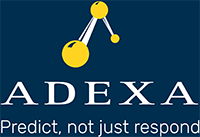Response Planning is More than Short-term Planning
Many of our prospects and clients ask us how S&OP and S&OE can be integrated. Many of which have already implemented S&OP. This is a fundamental question that is basically asking, we can plan, but can we execute the plan? After all, what good is planning if it does not lend itself to good execution. Planning by its nature cannot be very accurate since things change and some events are inherently unpredictable. However, plans and execution of plans can be improved constantly. But more predictive planning less respond planning is needed.
Response planning is a combination of both predictive planning and reactive planning. The more of the former the less of the latter is needed. How do we predict? By learning about the trends in the supply chain and what causes them. Recognizing such patterns enables us much better planning and smooth execution of the plans.
Planning and execution go hand in hand. There is no separation of the two. As we execute we learn about potential issues and causes. These findings need to go back into the plan for more accurate future planning. Equipment break-down, suppliers’ lead-time changes, trucks arrive late, and ships get stuck at the port. These are given, and need to be understood so that they can be predicted and incorporated into the plan. By the time it happens, it might be too late to avoid the risk.
We have always treated demand as stochastic. Supply side is also subject to stochastic variations. As we can forecast demand, we can also forecast supply and production more accurately. As demand variability changes due to seasons, quantity, socio-economic factors etc., supply side variability also changes. Hence, part of the process for planning and execution should be understanding such variability and being able to account for it in the planning process. There are many underlying trends in the supply chain that may not be visible to humans but systems can easily identify them as the causes of variability and account for them proactively.
If you want better response planning, then start by having better predictive planning. That is where it all starts. In most cases, unless you have already predicted the disruptive events, it would be too late to “respond.” Make S&OP and S&OE part of the same process and deploy systems that can support this approach by having a unified environment for both processes and can continuously learn and become more predictive leading to less risk and more resiliency.



